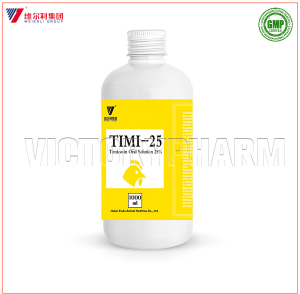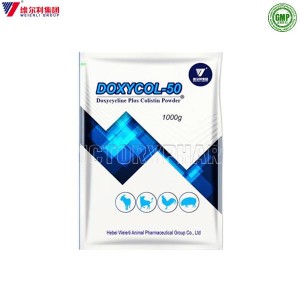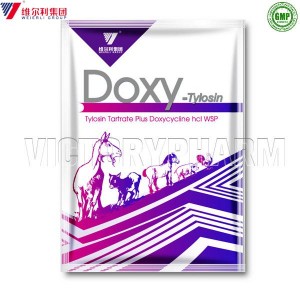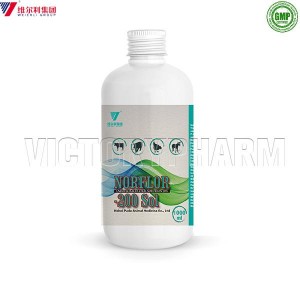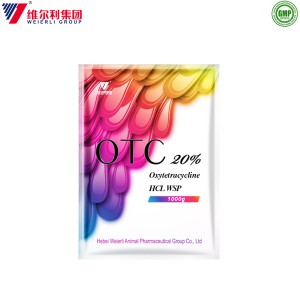Antibiotics Veterinary Medicine of Doxycycline 20% for Cattle Calves Sheep Goats Use
1. Doxycyline is active against Gram-positive and Gram-negative bacteria of the following species: Staphylococcus, Diplococcus, Listeria, Bacillus, Corynebacterium, Neisseria, Moraxella, Yersinia, Brucilla spp., Erysipelothrix, Vibrio, Haemophilus, Actinobacillus, Bordetella bronchiseptica, Pasturella, Fusobacterium, Actinomyces. It is also active against spirochetes, micoplasmas, ureaplasmas, rickettsias, chlamydia, Erlichia and some protozoa (e.g. Anaplasma).
2. Doxycycline is very well absorbed after its oral administration. Because of its distinct lipophilic properties, doxycycline is excellently distributed over the tissues. Concentrations in the lungs of cattle and pigs are about twice as high as those in the plasma. Doxycycline for the largest part is excreted with faeces (intestinal secretion, bile), in a lesser degree with urine.
3. Doxycycline treat infections caused by doxycycline sensitive germs in poultry, pigs and calves.
50 mg DOXY 20% WSP per kg b.w./ day to be administered with the food or drinking water.
| Prevention | Treatment | |
| Poultry | 100g in 320 litres of drinking water for 3-5 days | 100g in 200 litres of drinking water for 3-5 days |
| Pigs | 100g in 260 litres of drinking water for 5 days | 100g in 200 litres of drinking water for 3-5 days |
| Calves | - | 1g per 20 kg b.w./day for 3 days |
1. Diarrhoea by disturbance of the normal intestinal flora may occur. In severe cases, treatment should be stopped.
2. An acute enterotoxemia, cardiovascular disturbances and acute mortality seldom may occur in calves (particularly with overdoses.)
3. Tetracyclines primarily are bacteriostatic drugs. Simultaneous use with bactericidal actino antibiotics (penicillins, cephalosporins, trimethoprim) possibly may cause an antagonistic effect.
4. It is advised to control regularly the in vitro sensitivity of isolated pathogenic germs. Drinking water facilities (tank, pipe, nipples, etc) should be cleaned thoroughly after cessation of medication.
5. Do not use in animals with a previous history of hypersensitivity towards tetracyclines. Do not use in ruminant calves.











